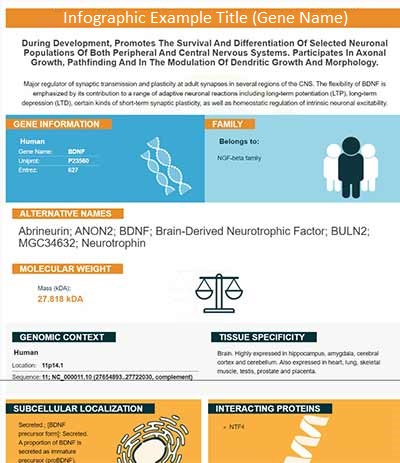Product Info Summary
| SKU: | M03138-2 |
|---|---|
| Size: | 100 μl/vial |
| Reactive Species: | Human, Mouse, Rat |
| Host: | Rabbit |
| Application: | WB |
Customers Who Bought This Also Bought
Product info
Product Name
Anti-ODC1 Rabbit Monoclonal Antibody
View all Ornithine Decarboxylase Antibodies
SKU/Catalog Number
M03138-2
Size
100 μl/vial
Form
Liquid
Description
Boster Bio Anti-ODC1 Rabbit Monoclonal Antibody catalog # M03138-2. Tested in WB application. This antibody reacts with Human, Mouse, Rat.
Storage & Handling
Store at -20°C for one year. For short term storage and frequent use, store at 4°C for up to one month. Avoid repeated freeze-thaw cycles.
Cite This Product
Anti-ODC1 Rabbit Monoclonal Antibody (Boster Biological Technology, Pleasanton CA, USA, Catalog # M03138-2)
Host
Rabbit
Contents
Rabbit IgG in phosphate buffered saline, pH 7.4, 150mM NaCl, 0.02% sodium azide and 50% glycerol, 0.4-0.5mg/ml BSA.
Clonality
Monoclonal
Clone Number
22O12
Isotype
IgG
Immunogen
A synthesized peptide derived from human Ornithine Decarboxylase
*Blocking peptide can be purchased. Costs vary based on immunogen length. Contact us for pricing.
Reactive Species
M03138-2 is reactive to ODC1 in Human, Mouse, Rat
Reconstitution
Restore with deionized water (or equivalent) for reconstitution volume of 1.0 mL
Observed Molecular Weight
51 kDa
Calculated molecular weight
191615 MW
Antibody Validation
Boster validates all antibodies on WB, IHC, ICC, Immunofluorescence, and ELISA with known positive control and negative samples to ensure specificity and high affinity, including thorough antibody incubations.
Application & Images
Applications
M03138-2 is guaranteed for WB Boster Guarantee
Assay Dilutions Recommendation
The recommendations below provide a starting point for assay optimization. The actual working concentration varies and should be decided by the user.
WB 1:500-1:2000
Validation Images & Assay Conditions

Click image to see more details
All lanes use the Antibody at 1:2K dilution for 1 hour at room temperature.

Click image to see more details
All lanes use the Antibody at 1:2K dilution for 1 hour at room temperature.

Click image to see more details
Western blot analysis of ODC1 expression in K562 cell lysate.
Protein Target Info & Infographic
Gene/Protein Information For ODC1 (Source: Uniprot.org, NCBI)
Gene Name
ODC1
Full Name
Ornithine decarboxylase
Weight
191615 MW
Superfamily
Orn/Lys/Arg decarboxylase class-II family
Alternative Names
Clathrin heavy chain 1;Clathrin heavy chain on chromosome 17;CLH-17;CLTC;CLH17, CLTCL2, KIAA0034; ODC1 BABS, NEDBA, NEDBIA, ODC ornithine decarboxylase 1 ornithine decarboxylase
*If product is indicated to react with multiple species, protein info is based on the gene entry specified above in "Species".For more info on ODC1, check out the ODC1 Infographic

We have 30,000+ of these available, one for each gene! Check them out.
In this infographic, you will see the following information for ODC1: database IDs, superfamily, protein function, synonyms, molecular weight, chromosomal locations, tissues of expression, subcellular locations, post-translational modifications, and related diseases, research areas & pathways. If you want to see more information included, or would like to contribute to it and be acknowledged, please contact [email protected].
Specific Publications For Anti-ODC1 Rabbit Monoclonal Antibody (M03138-2)
Loading publications
Recommended Resources
Here are featured tools and databases that you might find useful.
- Boster's Pathways Library
- Protein Databases
- Bioscience Research Protocol Resources
- Data Processing & Analysis Software
- Photo Editing Software
- Scientific Literature Resources
- Research Paper Management Tools
- Molecular Biology Software
- Primer Design Tools
- Bioinformatics Tools
- Phylogenetic Tree Analysis
Customer Reviews
Have you used Anti-ODC1 Rabbit Monoclonal Antibody?
Submit a review and receive an Amazon gift card.
- $30 for a review with an image
0 Reviews For Anti-ODC1 Rabbit Monoclonal Antibody
Customer Q&As
Have a question?
Find answers in Q&As, reviews.
Can't find your answer?
Submit your question





